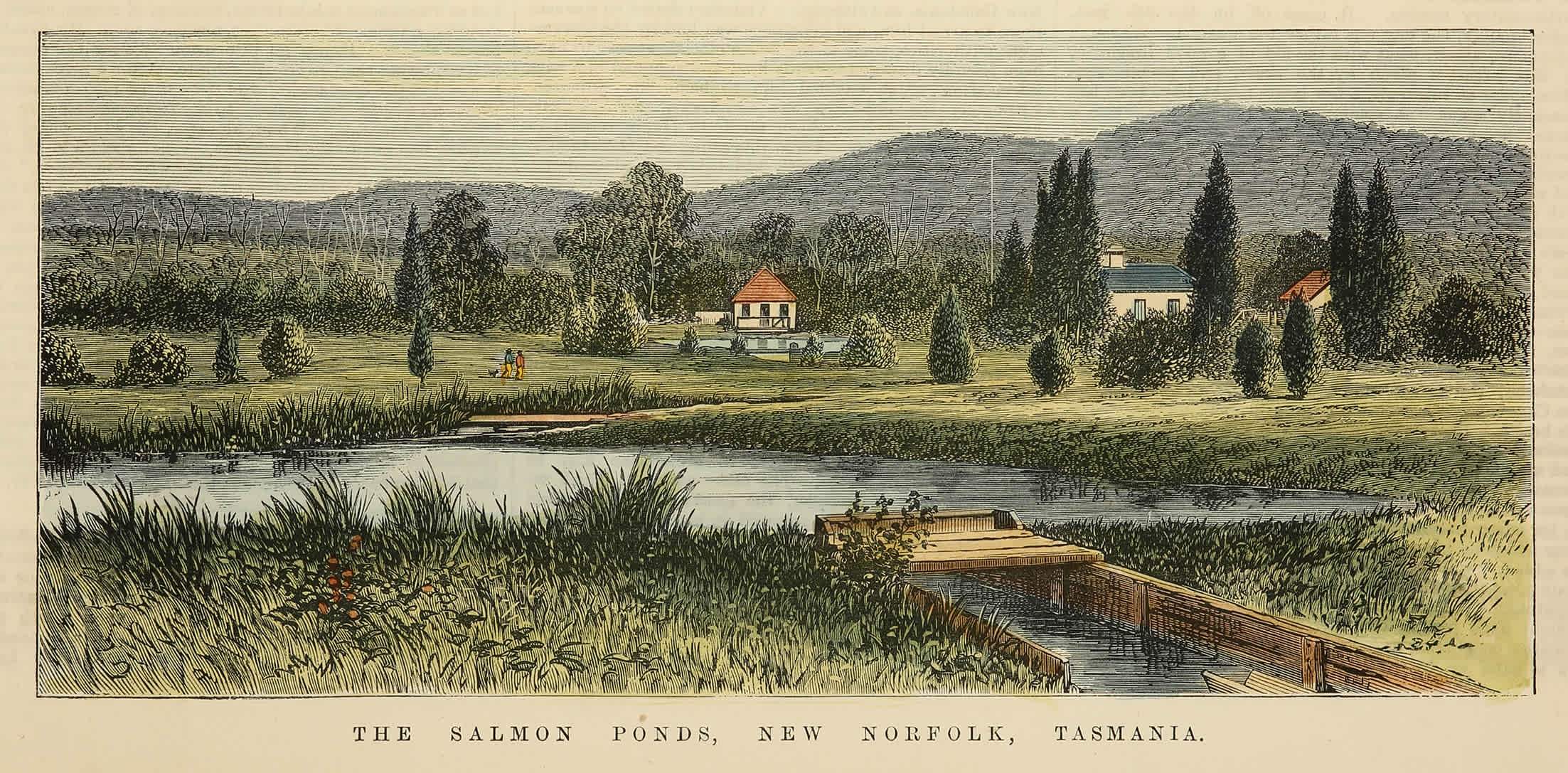For much of her life my great aunt Jean Simmons was not a happy woman. The niece of Hobart pioneer and eastern shore land developer Matthew Simmons, Jean had a sour disposition and a deep belief that the world had not treated her fairly. She might have had a case, but nothing could really excuse the grumpiness and coldness she gave to neighbours and family alike, right up to her death when nearly 89 in 1984. With just a couple of notable exceptions she had no friends to speak of.
It was Jean’s innate bitterness, however, that helped me most when I came to write my book Two Good Soldiers, One Great War some 40 years after her death. Without her life-long determination to hold on to rose-coloured memories, I would not have had the source material to uncover a forgotten footnote in Hobart’s history.
Born in October, 1895, Jean was the elder daughter of Charlie Simmons and his wife Amy. Charlie and his older brother Matt were second-generation Tasmanians, the sons of the eminent Congregational churchman John Wilkes Simmons. Amy came from convict stock.
A lawyer, Matt went into property in the 1880s and with others formed the Beltana Land Development Company to open Hobart’s eastern shore for residential development. His name is still prominent in Lindisfarne, both in the riverside park that bears his name and on the history boards that tell the suburb’s story.
Less academic than his older brother, public servant Charlie was an enthusiastic member of the Derwent Regiment, Hobart’s volunteer militia. In the years leading up to World War I, Charlie enjoyed mentoring many of the young men in the militia ranks, even more so when war broke out and Charlie found himself too old to enlist. One of his great passions was walking and leading troops of young men up and around Natone Hill, up to the Springs on kunanyi, or down to Sandy Bay.
After buying a block from his brother around 1890, Charlie built a house for his wife and future family that would be Jean’s home until her death. (Some say it was just the third house built in Lindisfarne.) Charlie’s friendly and hospitable nature was inherited by his younger daughter May, but not Jean, who took life much more seriously.
Despite her demeanour, Jean did have her admirers in the happy years before the war (at least she thought she did, and talked about them until she died). They included boys such as the young storekeeper Ralph Margetts, or the chirpy law student Herbert Henry Howard, who went by his schoolboy nickname “Bobba”. Jean was a good junior tennis player and letters from both men reveal they vied to partner her for doubles.
However, no other man was quite so important to Jean, nor to the rest of the family, as Ivor Margetts, Ralph’s older brother. Ivor was a star Launceston footballer and moved south in 1912 to play for Lefroy Football Club and to take up a job at The Hutchins School. Ivor needed somewhere to stay and the Simmons family offered him board.
My book tells the story of Ivor and his relationship with Charlie, Amy and their daughters from the time he moved in until the time of his death on the Western Front at Pozieres, barely four years later. It also uncovers the scandalous treatment of the old Hobart gaol where Charlie was superintendent and the impact of the war on tiny Hobart. That I found out so much about Ivor, Charlie and the rest of the young Tasmanians caught in the horrors of World War I was thanks to Jean’s grim determination never to throw out any family letters, photographs, newspaper cuttings or official documents. And her constant talk about halcyon days decades earlier as if they were yesterday.
. . .
Jean was not quite 19 when the first Australian Expeditionary Force sailed from Hobart bound for war, with Ivor, Ralph and hundreds of other young men on board. She could rightly have assumed that one of them would return and marry her. (Her lack of ambition and enterprise during the war years implies she had no other plans.) But too many of those young men didn’t return and those who did were far different from when they left, including Ralph and Bobba. Her sister May married in 1926 but nobody suitable, maybe nobody at all, came calling for Jean.
Twelve years after the war ended, Jean sailed to England on a trip paid for by her father and her uncle Matt, for whom she had been working for 10 years. It may have been a last-ditch attempt to find a husband for the now 35-year-old. Her letters and diaries from the trip reveal that she was looking for companionship, if not love. But her quest was cut short when her beloved father Charlie died suddenly in Hobart and she was called home. Things got worse when her uncle Matt himself died suddenly just days before she reached home.
With her mother to care for, Jean was forced to find a job and keep house, the same house in which she had been born. It wasn’t where she wanted to be. She was envious (probably jealous) of May, her husband and their growing family. She was particularly cold towards young women, notably her niece, May’s daughter, and at times her nephews’ wives. Perhaps they had the life and prospects that had been denied her.
Jean was particularly miffed at being overlooked for an invitation when the Queen visited Hobart in 1954, despite her connection to notable pioneers. At the time Jean was state secretary of the Child Welfare Association.
One of the few adults Jean respected was May’s oldest son Robin (my father). Perhaps as a consequence, Jean was always welcoming when I called by when living in Hobart in the late 1970s and early ‘80s. She was also welcoming to neighbours Alan and Beatrice Richardson who nobly and selflessly cared for Jean in her declining years. Alan, a World War II veteran (which may have explained her fondness for him), had the run of the garden and the house while Beatrice delivered daily food parcels. The Richardsons’ daughters and grandchildren were also surprisingly welcome.
After Jean’s death, the family house in Lindisfarne was sold and her store of family memories eventually came to me. At the time of writing, the house is owned by Beth Warren, a writer herself and Clarence councillor. Several decades earlier Jean had begrudgingly sold Beth’s parents a block carved from her father’s original land holding on which they built a family home. Beth was convinced Jean resented the necessary sale and maintained decades of enmity towards the interlopers. She kept a beady eye on Beth and her siblings whenever they climbed the fence to peer over. Woe betide them if they scared Jean’s few sheep or hopped over to chase an errant ball.
“She must have been sitting watching the whole day, just in case some snotty-nosed brat dared to tread on her withered grass or feed her scrawny sheep,” Beth once wrote.
Many years later, long after Jean died, Beth and her family bought the grand old house at the top of Lincoln Street. “I sometimes wonder whether Miss Simmons was turning in her grave at the thought of her house being occupied by those brats from over the fence,” she chuckles.
Australia had thousands of women of Jean’s generation whose lives were devastated by World War I, even though they never left home. Many of them, spinsters and maiden aunts, led lonely and unfulfilled lives. Not all were bitter and unfriendly, but maybe it was war that explains those who were.■
Hugh Jones is retired journalist who started his career with The Examiner in 1980. He later worked in the UK and Melbourne, where he now lives. His book Two Good Soldiers, One Great War was released by Forty South Publishing in 2024.








